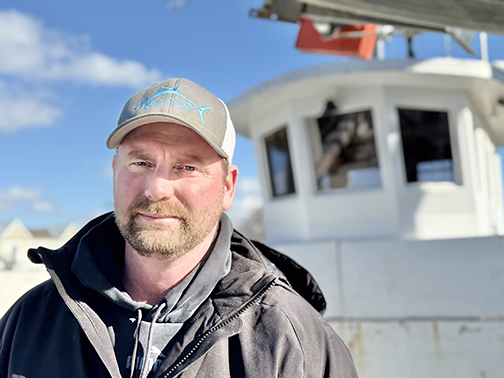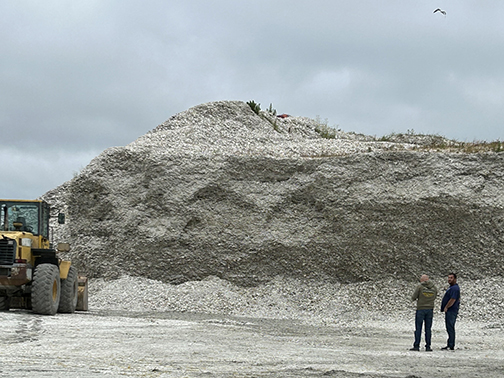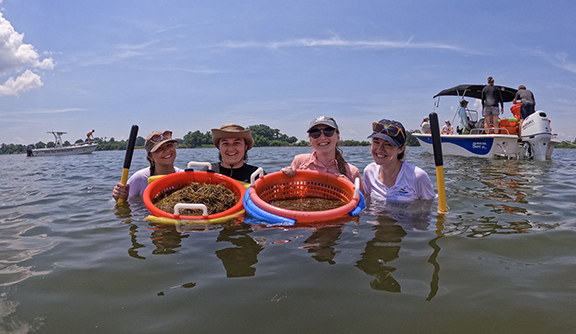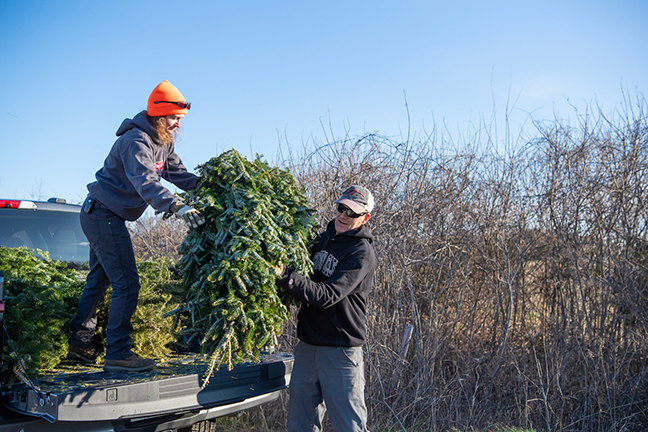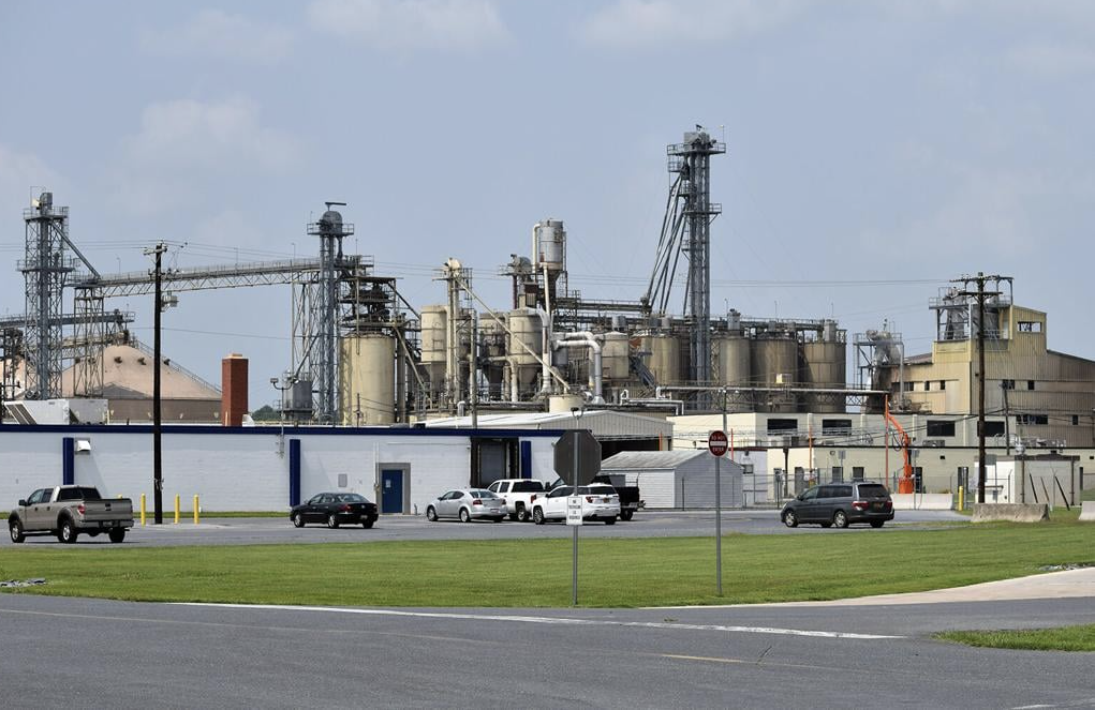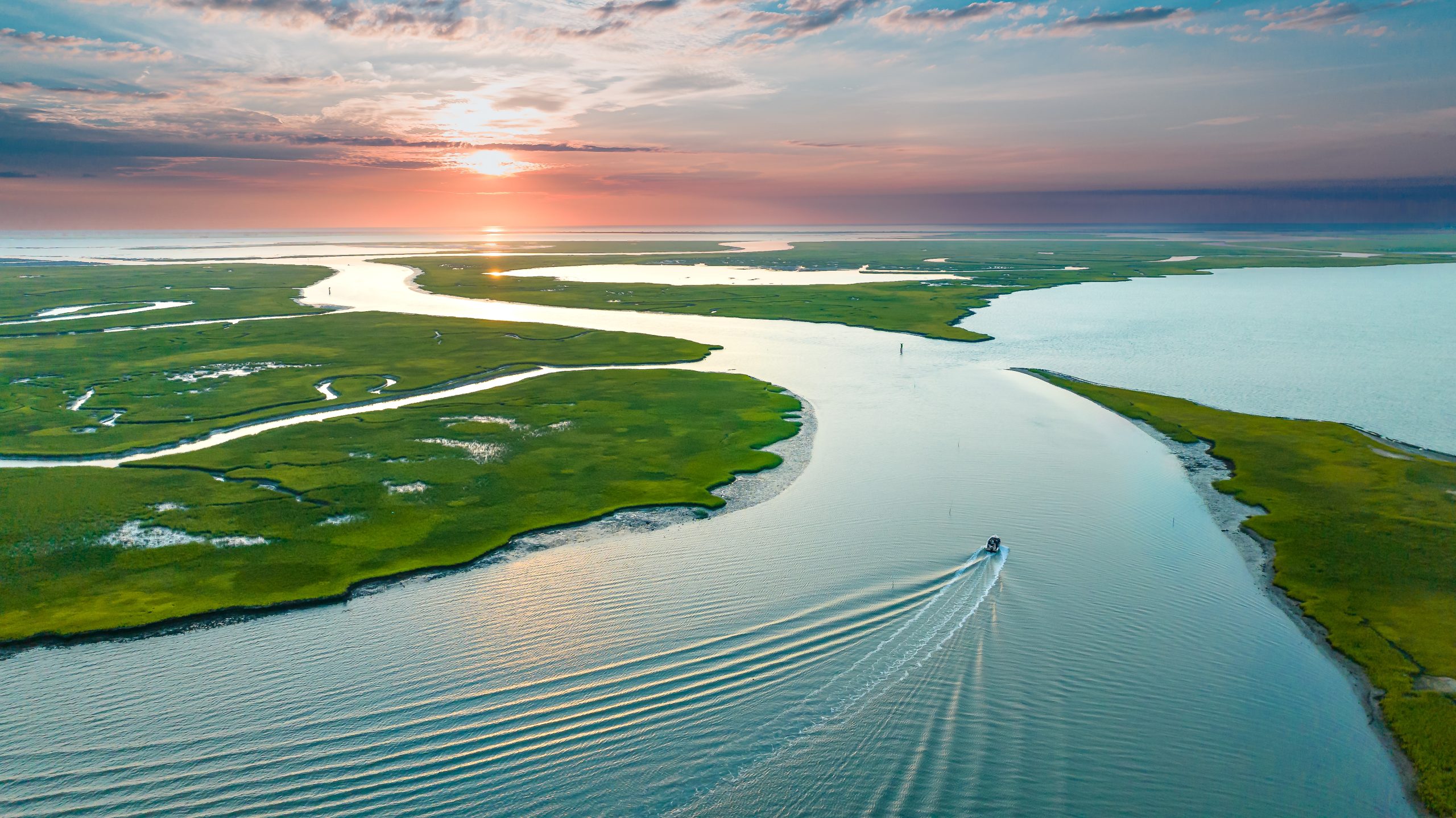 Efforts in recent years to accelerate the Chesapeake Bay restoration have run into a wall of Trump administration executive orders that halted payments for huge swaths of Bay-related work, raising doubt about the future of many projects.
Efforts in recent years to accelerate the Chesapeake Bay restoration have run into a wall of Trump administration executive orders that halted payments for huge swaths of Bay-related work, raising doubt about the future of many projects.
Tens of millions of dollars for Bay-related work being carried out by nonprofits, farmers, churches, universities and states have been left in limbo. Some say the damage could take years to undo.
The uncertainty stems from a government-wide freeze on grant awards and contracts ordered by the Trump administration Jan. 27 intended to allow for reviews that ensure those expenditures “align federal spending and action with the will of the American people as expressed through presidential priorities.”
Initially, that impacted about $3 trillion in funding nationwide.
The administration rescinded the “pause” less than two days later, unfreezing some but not all of the grants. A suit by 22 states and the District of Columbia followed swiftly, challenging the administration’s hold on federal funds.
Yet more than two weeks later, despite several court rulings ordering an end to the funding freeze, many organizations and states in the Chesapeake Bay region say that some funding is still on hold and are not sure whether it will be restored. Some were advised to halt work.
The action has alarmed some lawmakers, including Maryland Sen. Chris Van Hollen, a Democrat, who said his office has received numerous reports that some organizations are still unable to access already-approved grant money.
“Holding these funds hostage jeopardizes countless jobs in Maryland and across the country and threatens our progress on improving the health of the Bay and our environment,” Van Hollen said.
While nongovernmental organizations were hard hit, states were not immune. On Feb. 12, Pennsylvania Gov. Josh Shapiro and several state agencies filed suit, contending that $2.1 billion in federal funding is in doubt for environmental work. Most of that funding is not directly related to Bay cleanup and restoration, but much of it is aimed at programs that more broadly address water pollution and reduce greenhouse gas emissions.
Maryland officials reported that large amounts of climate funding are on hold.
Ripple effects
It’s a huge setback for Bay restoration. Federal agencies are the largest funders for Chesapeake-related work, but much of it is carried out through grants and contracts. (The Bay Journal also receives some support from a federal grant.)
In recent years, with many key Bay restoration and pollution reduction goals off-track, federal agencies dramatically ramped up funding to accelerate progress, fueled by legislation passed during the Biden administration that made hundreds of millions of dollars available for work within the watershed.
Those funds are used to plant streamside forest buffers, restore wetlands, improve trout streams, build oyster reefs, reduce runoff from farms and developed lands, promote environmental education and support other efforts aimed at improving the Bay and its 64,000-square-mile watershed. The work touches Maryland, Virginia, Pennsylvania, West Virginia, Delaware, New York and the District of Columbia.
While some funds have been restored since the Jan. 27 order, many grant recipients have found their funding halted. In many cases, they are not being reimbursed for expenses they’ve already incurred.
“We have funds for one more payroll. If the funds don’t start being deposited from the federal government, we will not be able to pay our staff nor our vendors,” one organization reported to the Choose Clean Water Coalition.
The coalition, which includes more than 300 mostly small nonprofits working throughout the Bay watershed, is surveying members to gauge the impact of the disruptions.
Of the first 38 responses in the on-going poll, 23 reported that grants had been paused for at least some period of time. Many of the groups receive half or more of their funding from federal sources, putting their future at risk. Many have paused work.
“It’s a very real example of what happens when this money doesn’t exist,” said Kristin Reilly, director of the coalition. “It really drives the point home about the importance of the federal partnership and the federal investment in this work. It really cannot move forward without that federal support.”
Organizations contacted by the Bay Journal reported that they get as much as 80% of their budgets from federal sources.
The Chesapeake Bay Foundation, which is the largest nonprofit Bay advocacy group, gets about 12% of its funding from federal grants that support environmental education, conservation actions on farmland and other activities. The group expressed alarm about what a pullback in federal funding would mean for it and other organizations involved in restoration work around the Bay region.
“We can’t restore the Chesapeake Bay and its rivers and streams without federal investment,” said Keisha Sedlacek, the foundation’s federal director. “These federal grants support farmers, state and local government programs, and community projects that benefit people, the economy and the environment.”
Uncertainty abounds
While some organizations have seen funding restored, at least for now, others remain in limbo. Many are frustrated by the lack of guidance about how or why decisions are made, or which programs are targeted.
“We’ve been trying to grapple with the news as it unfolds every six hours, every 12 hours,” said Meenal Harankhedkar, executive director of Interfaith Partners for the Chesapeake, which helps congregations with environmental restoration projects. “I think we’re all in the stage of monitoring and processing.”
Her group is particularly concerned because diversity, equity, inclusion and environmental justice programs were specifically targeted for elimination in the executive orders from the White House.
Interfaith Partners has long prioritized efforts that promote equity, and last year it received a $1.8 million grant for “equity enhancement.” The project’s goal is to work with faith-based institutions to install green stormwater improvements and plant nearly 2,000 trees across 50 acres of urban and suburban properties.
Despite the “equity” label, Harankhedkar said “we’re trying to make a universal impact through all these programs.” She added that she feels confident, though, that her organization can ride out any rough waters because it receives funding from a variety of nonfederal sources.
Apart from diversity programs, much of the affected funding appeared connected to the Infrastructure Investment and Jobs Act and the Inflation Reduction Act. The latter was a major funding source for a variety of climate-related work.
Huge amounts of Inflation Reduction Act funding distributed by the U.S. Department of Agriculture —the largest financial source of conservation work in the Bay watershed — appeared stalled with no clear indication as to whether it would be restored.
The USDA did not respond to a request for comments about impacted programs. But the department had awarded roughly $1 billion for various “climate smart” agriculture projects in the Bay watershed that seek to improve soil health, store carbon, control methane emissions from farms and promote more efficient manure and fertilizer applications, among other projects.
Other USDA programs are affected as well. In some cases, it is not organizations but individual farmers who directly bear the brunt.
In December, work crews finished installing $100,000 worth of solar panels on Michael Protas’ farm in Montgomery County, MD, aimed at reducing costs for his subscription vegetable business by making it entirely solar-powered.
The project was approved under a USDA program for energy efficiency on small farms. But the grant that was to reimburse half of the cost now appears to be in jeopardy. If it doesn’t materialize, Protas said, “I’m on the hook for the whole $100,000.”
“Farmers are inherent risk takers,” he added. “There are variables you sign up for. But the one thing that was not on anybody’s bingo card was the government not paying on a contract that you already had.”
Even if the funding eventually comes through, Protas said the sudden unreliability of such grants makes it far less appealing to take that risk in the future.
Many who work on projects aimed at controlling farm runoff — the largest source of water-fouling nutrients to the Bay — worry that leaving farmers stuck with the tab will have a chilling effect on future participation that could take years to overcome.
“We work hard to build our relationships with farmers,” said Kristen Hughes Evans, executive director of Sustainable Chesapeake, which works with farmers on conservation initiatives but has seen some of its funding frozen. “Farmers can be skeptical of the government, so the ones that come in the door are often ones you’ve worked hard with to build that trust. It’s absolutely critical for our conservation programs that participating farmers have a good experience. When commitments are made to farmers, they have an expectation that those commitments are honored. When they are not, they remember.”
Reimbursements in jeopardy
A significant amount of money, especially the largest distributions, is sent directly from federal agencies to states, universities and larger organizations.
But funds for much of the Bay-specific work — especially for smaller organizations — are distributed through intermediaries such as the National Fish and Wildlife Foundation and Maryland’s Chesapeake Bay Trust.
The Bay Trust awards $20 million–$30 million annually, about a third of which comes from federal agencies. Its president, Jana Davis, said the prospect that grants awarded in previous years may not be honored leaves the trust in a bind.
It awards grants based on the assurance that the federal government will follow through on promises. But it does not get reimbursed until grantees actually spend the money and report it back to the trust for payment. “We can’t invoice the federal government until we expend the funds,” she said. “So there’s this weird moment of risk.”
The trust’s access to federal funds was restored shortly after the “pause” for all but one of the federal grants it receives. The exception is a $17.5 million grant from the U.S. Forest Service over four years to increase tree cover in disadvantaged communities.
The trust committed the first $1 million of that last year to eight groups, but invoices submitted in January for $250,000 have not been paid, Davis said. In response to its queries about when it would be paid, the trust got an email saying that “these invoices have been placed on hold due to a presidential executive order. We are currently awaiting further directions.”
Even for those grants restored after the initial hold, doubt lingers about whether they will be frozen again or possibly withdrawn altogether.
Davis said the trust has advised grantees to go ahead with the work it has already authorized and that the trust will cover the costs on its own, even if the federal money never materializes.
That’s possible because the trust has its own dedicated streams of funding from the sale of Maryland Chesapeake Bay license plants and from the state’s voluntary income tax checkoff to the Chesapeake Bay and Endangered Species Fund. But using those funds to cover unpaid federal grants comes with a cost to other programs that the trust normally supports, such as environmental education.
“It’s heartbreaking,” Davis said of the disruption and uncertainty surrounding federal funding. “This is good work. This is like churches doing green things to their parking lots.”
The National Fish and Wildlife Foundation, a congressionally created nonprofit, last year funneled more than $100 million in federal grants to dozens of organizations to support Bay-related work.
NFWF officials did not respond to a request for comments, but several grant recipients interviewed by the Bay Journal said the funding outlook for many projects was in flux. Two weeks after the Jan. 27 notice that initiated the federal freeze, NFWF emailed some grantees advising them to halt work.
“As we are unable to reimburse you for costs associated with projects that include funding from one or more frozen accounts, we are recommending you cease all activities on the relevant grant(s),” the email said.
Weighing risk amid uncertainty
Even if funding is fully restored, many grant recipients express frustration about the future. Grants often cover projects that span multiple years with money awarded one year at a time. So while the funds may be restored for now, the remainder can again be targeted in future years. That makes it difficult to decide whether to fill positions or award subcontracts for projects that may be abruptly ended.
ShoreRivers, an environmental group on Maryland’s Upper Eastern Shore gets about a quarter of its $7.5 million annual budget from various federal grants that support work with farmers, environmental education and other initiatives.
Isabel Hardesty, executive director of the organization, said that while most of its federal funding has been freed up, “we are reluctant to advance funds or continue projects that might be impacted later this year.
“This is making us reevaluate our budget. We are also spending huge amounts of staff time trying to manage and plan for the impacts of funding uncertainty, instead of working toward our mission of thriving rivers and engaged communities.”
That uncertainty seems likely to continue as the administration has thrust other uncertainties into the process. In a directive issued Feb. 6, the White House said it intended to stop funding nongovernmental organizations “that undermine the national interest.”
The two-paragraph memo tells agencies to review all funding to those groups to ensure future decisions align “with the goals and priorities of my administration, as expressed in executive actions; as otherwise determined in the judgment of the heads of agencies; and on the basis of applicable authorizing statutes, regulations, and terms.”
Further, multiple reports suggest that many agencies have been told to expect budget cuts of 30%–40% when the administration’s budget comes out in March. While Congress may reject the proposed budget, it casts more uncertainty about the future of projects that often span multiple years.
While the administration has said it is trying to improve the efficiency of programs, many say the uncertainty has the opposite effect. It delays decisions and work, and it drives up costs. Subcontractors may charge more if they are not certain they will be paid by groups that are supposed to be receiving grants.
“When there are unknowns, there’s risk, and risk costs money,” said Jay Bernas, CEO of the Hampton Roads Sanitation District, which is using federal loans to implement advanced water treatment technologies on its wastewater plants.
State and climate funding hit
States have also been affected. While Bay-specific funding to states does not seem to be impacted, huge amounts of other environmental funding are on hold, many of which would benefit streams and help combat climate change — all issues that greatly affect the Chesapeake watershed.
The Pennsylvania suit said $2.1 billion was in jeopardy, including $1.2 billion in funding that is frozen and $900 million that is on hold pending federal review.
About $750 million of the frozen funds were for acid mine drainage remediation, which is a major source of stream degradation in the state. More than $400 million flagged for review is slated to fix abandoned oil and gas wells in the state, which discharge pollutants into streams and are major sources of methane, a greenhouse gas. All of that work is funded through the infrastructure act.
Also impacted were hundreds of millions of dollars in climate-related projects funded from the Inflation Reduction Act that aimed to improve energy efficiency and other initiatives that reduce greenhouse gas emissions.
Maryland likewise could be particularly hard hit. State officials are already struggling to close a projected $2.7 billion budget deficit for the coming year, and cuts in federal funding are sure to worsen the fiscal crunch.
A spokesman for the Maryland Department of the Environment said its access to $13.7 million in grants from the U.S Environmental Protection Agency has been “suspended.”
Those funds covered a variety of environmental regulatory activities, including monitoring air pollution and overseeing mine safety. Also shut down at least temporarily are two multi-state grants aimed at reducing climate pollution by expanding electric vehicle infrastructure, planting trees and restoring wetlands and coastal habitats. Maryland’s share of those grants was to total $80 million, said MDE spokesman Jay Apperson.
The holdup in already-awarded climate funding is having trickle-down effects for at least some recipients.
Edwin Luevanos, CEO of Citizen Energy, a small clean energy company based in the District of Columbia, said he already has had to lay off 3 of his 11 employees because he’s been unable to collect about $100,000 for work done last year to install electric vehicle chargers and solar panels in low-income communities nationwide.
Citizen Energy was awarded grants totaling about $10 million, one from the Department of Energy and another via the Maryland Clean Energy Center from the U.S. Department of Transportation. Half of that work was to be done in Maryland, Virginia and the District, he said, and he was planning to hire 40 or 50 people once all the approvals came in.
“I knew with the new administration there would be some changes,” Luevanos said, given Trump’s campaign attacks on renewable energy and diversity, equity and inclusion. “It’s unfortunate,” he added, “this administration took a hatchet approach versus a scalpel.”
A widespread halt in climate-related initiatives would have impacts that trickle down to Bay restoration as well.
Climate change is already impacting the Chesapeake Bay with rising water around the estuary and warmer temperatures in both the Bay and the rivers that feed it, and the changing conditions are predicted to make it even more difficult to meet pollution reduction goals.
But many of the actions aimed to reducing greenhouse gas emissions also aid Bay efforts. Projects that reduce emissions from farms can reduce nutrient-laden runoff. And programs that reduce the use of fossil fuels not only help control carbon dioxide emissions but also reduce the release of nitrogen oxides, a major source of nitrogen that feeds algal growth in the Bay and spurs creation of “dead zones.”
Recent computer modeling has shown that fully implementing the climate-related provisions in the Inflation Reduction Act would slash nitrogen deposition on the Bay and its watershed by more than 20%.
That would reduce the amount of the nutrient reaching the Bay by millions of pounds a year. It is a spiral that could ultimately put the region’s already-challenging Bay clean up goals out of reach.
By Chesapeake Bay Journal Staff
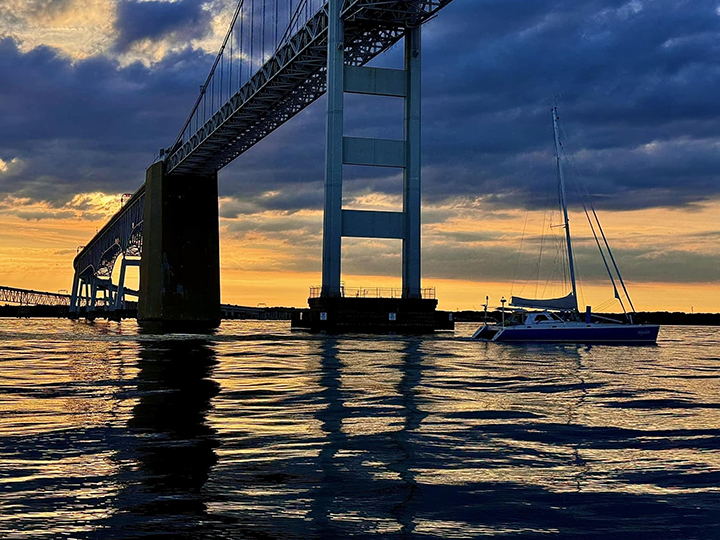 The U.S. Department of Agriculture in April announced the termination of its $3 billion “climate smart” program, a grantmaking initiative that was supporting hundreds of millions of dollars in conservation work in the Chesapeake Bay watershed.
The U.S. Department of Agriculture in April announced the termination of its $3 billion “climate smart” program, a grantmaking initiative that was supporting hundreds of millions of dollars in conservation work in the Chesapeake Bay watershed.


